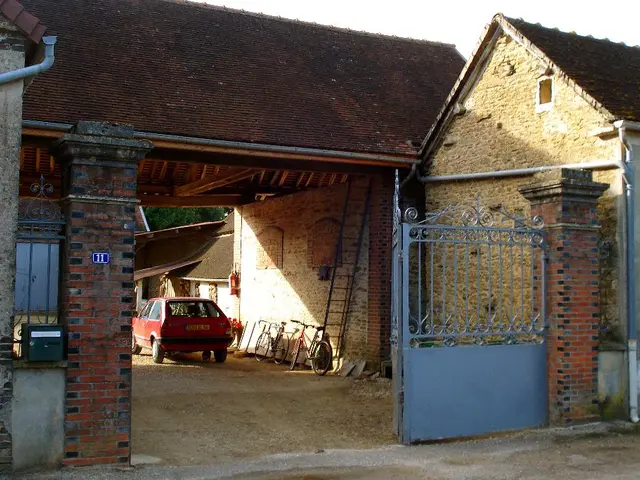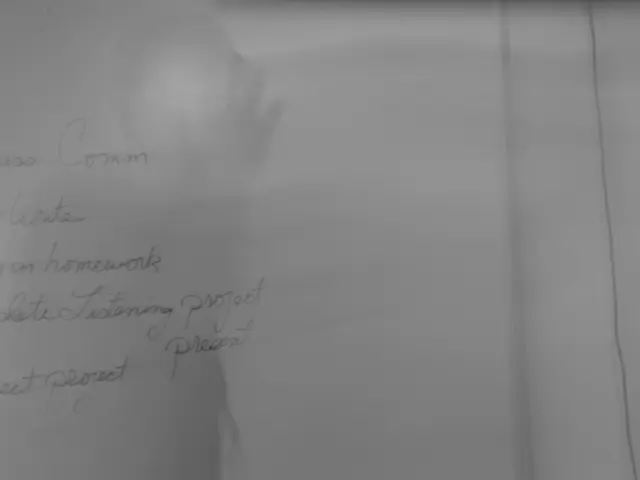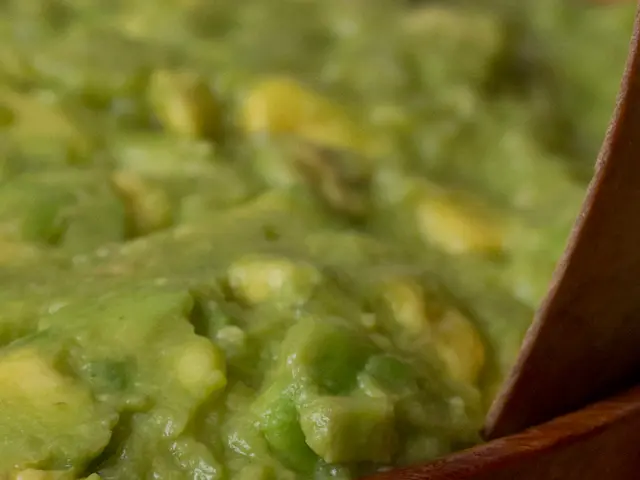Unpredictability in Shifts
In the current market period (Period 7), volatility has followed a "W"-shaped bottom, occurring during the middle of a Federal Reserve (Fed) hiking cycle. Market analysts predict that a spike in volatility may occur at or near the end of this hiking cycle. This shift in volatility patterns is not an uncommon occurrence in the financial world, as history has shown us.
Over the past five years, the market has experienced a prolonged low-volatility regime, with monthly returns typically ranging from +/- 3%. However, there is a higher-than-normal probability that we are on the brink of a shift towards a higher-volatility regime, regardless of the direction of the S&P 500.
The VIX Index, often referred to as the "fear gauge," is a key indicator of market volatility. During prolonged low-volatility periods, the VIX tends to remain low and stable. But when a transition to a higher-volatility regime occurs, the VIX spikes significantly, reflecting the increased uncertainty and risk perceptions in the market.
The current environment, as of mid-2025, shows the S&P 500 at all-time highs with contained volatility despite elevated valuation metrics. During these calm periods, the VIX tends to hover at lower averages. However, when major shocks occur, such as macroeconomic uncertainty from tariffs, geopolitical tensions, or fast-changing policy environments, the volatility regime shifts notably.
The VIX Index has demonstrated strong predictive power for near-term realized volatility in the S&P 500, especially during regime shifts. The VIX tends to jump higher amidst political or economic shocks as investors price in uncertainty and increased risk.
Historical examples of transitions between low-volatility to high-volatility regimes in the S&P 500 include the 2007–2009 Global Financial Crisis and the COVID-19 pandemic onset in early 2020. In both cases, the VIX surged sharply during the regime transitions.
The pattern observed in the VIX Front-Month Futures suggests a potential move into a higher-volatility regime. Once established above or below the 16-17 range, VIX tends to congregate above or below the historical support/resistance line for an extended period of time.
It's important to note that increased volatility does not necessarily mean bear markets. The S&P 500 has made all-time highs as well as corresponded with catastrophic bear markets in the context of higher volatility regimes.
This article is for informational purposes only, and investors should consult their own advisers, legal, and tax consultants before making any investment decision. If historical patterns continue, market participants should be prepared to endure market swings of upwards +/- 10-20%.
The analysis of Realised Volatility regimes indicates that we are in the 39th month since the bottom of the latest Realised Volatility period, with an average of 41 months to make a move into its 90th percentile. On average, 41 months following these low-volatility troughs, Realised Volatility subsequently spiked into its 90th percentile.
Individual accounts may vary in performance depending on size, funding level, and fee structure. An upward trend in the VIX ushers in the transition to a higher-volatility regime. Understanding how the VIX Index and VIX Front-Month Futures transition can help put additional context around inflection points.
References
- [1] Article on U.S. tariffs and market volatility in 2025
- [2] Article on the Shiller CAPE ratio
- [3] Academic paper on the predictive power of the VIX Index
- [4] Article on the impact of policy uncertainty on market volatility in 2025
- [5] Article on the Shiller CAPE ratio and its historical significance
- In view of the historical trends, it would be prudent for investors to consider alternative investment strategies in the business sector, as finance experts predict a significant spike in market volatility when the current Federal Reserve hiking cycle ends.
- Given the prolonged low-volatility regime over the past five years, the shift towards a higher-volatility regime, regardless of the direction of the S&P 500, may present an opportunity for investing in assets that respond well to increased market uncertainty.








